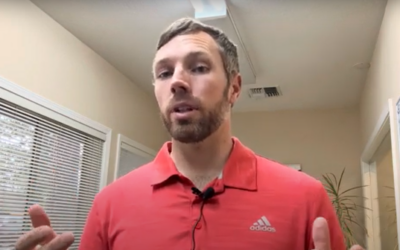Chronic pain will affect all of us at some point in our life. Whether that be headaches, back or neck pain, shoulders or upper extremity pain, or knees or lower extremity pain, at some point this will be a concern. What you do about managing those chronic conditions will greatly impact your overall health and wellness.
Chronic conditions will change the way that we move, think, and perception of daily activities. The way that it changes our movement patterns is by going back to when the pain started and seeing how things changed at the beginning. For example, if you have knee pain, you are going to walk differently. Walking differently can work its way up to the hip and low back area and then you have low back pain. This will then become your “normal” way of walking and continue to irritate your back. Now you start to get pain on the other leg due to differences in walking pattern. This could easily become reality without recognizing and stopping the poor movements before they become a bigger concern. These compensations are common with any injury. Addressing these compensations early has been shown to help the problems get better faster. If you have had this concern for 10 years, it is going to take longer to get better due to all the changes that are going to have to be teased out.
The next part is that chronic conditions will change the way you think of things. For instance, if you have this pattern of “If I go downstairs, this will hurt my knee”, you will start avoiding stairs completely or walking down them differently, which is compensation that we have already discussed. This can become a circle of thinking that, for this example, stairs are scary and will hurt my knee or back even 10 years down the road. By that point of being 10 years down the road, the tissue no longer is injured, but you remember that at one point in your life it did hurt, and you are going to continue to avoid it to try and avoid the pain that you once had. Now you must change your perception of what is actually pain. To get out of this circle leaning how to get back to the “old normal” that was not painful is going to mean identifying those compensation movements and try and make them ideal and comfortable. Going about this in a smart way is going to help you get better faster.
As for treatment, getting treatment sooner rather than later is going to help you feel better faster. Opioid medication has been shown to be very ineffective for chronic pain. When you take them for chronic conditions, you are masking the pain enough that you can do these activities, but then the pain returns, and you have not changed anything, and you are back to where you started. You need to change the way you move. To start with your treatment in our office will be similar with chiropractic adjustments, soft tissue work, rehabilitation with exercise and stretches, and/or other therapies. However, for chronic conditions there needs to be more of an active part on you, the patient, to actively at home do these exercises and movements to feel and move better. This will teach you how to move differently and be more comfortably with it. This is one reason these concerns take longer to get better. The more you become active with your care the faster you will get better, and I will be assessing things as you improve and alter your plan and treatment to adjust to how you improve. These types of concerns take a lot of work from both the patient and the medical professional.
For chronic problems, things change. If you do not help them try and change back, they do not usually go back on their own. If you do not alter that circle, it also usually leads to more or other injuries down the road. Reach out for questions you may have and happy to help.
Tahoe’s Premiere Sports Chiropractor
Follow us on
Facebook https://www.facebook.com/summittoshore/
Instagram https://www.instagram.com/summittoshore/





